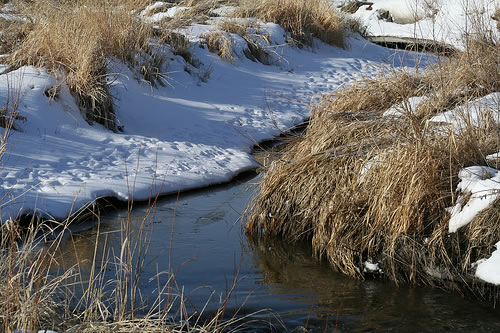Early melt means less cool water for California

 The Sierras are in the midst of a series of major storms expected to add significant depth to the winter snowpack. And in case you think that’s just ho-hum information, here’s a fact you might find more compelling: the Sierra snowpack provides 60 percent of Southern California’s water. Agriculture, recreation and life in general could be affected by the continuing drought that has plagued California for at least the past four years. And according to one Weather Channel report last week, the current set of storms packs enough of a wallop to actually end the drought and refill our reservoirs.
The Sierras are in the midst of a series of major storms expected to add significant depth to the winter snowpack. And in case you think that’s just ho-hum information, here’s a fact you might find more compelling: the Sierra snowpack provides 60 percent of Southern California’s water. Agriculture, recreation and life in general could be affected by the continuing drought that has plagued California for at least the past four years. And according to one Weather Channel report last week, the current set of storms packs enough of a wallop to actually end the drought and refill our reservoirs.
But the role of the Sierra snowpack is more significant to our eco-system than determining whether or not we can water our lawns. Because of an effect called “albedo,” which is the ratio of sunlight that reflects off of a land surface, the condition and size of the snowpack impacts climate change, and, conversely, climate change impacts the condition and size of the snowpack.
A 2009 study by the California Climate Change Center authored by physicists and climate experts from the Jet Propulsion Laboratory, UCLA and the National Centers for Environmental Prediction concluded that a five percent increase in snow albedo can result in as much as a 30 percent reduction in the amount of total spring and summer runoff. The report also showed that man-made carbon emissions, which can be measured as black carbon deposits on the snow, have a major impact on snow albedo.
Carbon reduces the percent of sunlight reflecting off the snow surface, hence increasing the amount absorbed into the ground. The warming resulting from less reflection reduces the snowpack size and results in lower levels of runoff. Ensuing political battles over water needed by industry and agriculture have become the stuff of legends (and movies) for decades in California.
But this report offers great promise, because it makes clear that premature snow melt is at least partially the fault of man’s actions. The report stated that “reduced snow albedo that can occur by the increase in local emissions and subsequent b c deposit on the Sierra Nevada snowpack can enhance earlier snowpack depletion. This will further reduce warm season water resources and add to the effects of the low-level warming induced by increased greenhouse gases.” In other words, man is part of the problem, and can become part of the solution.In the war of words over global warming, few examples of real science are cited – perhaps because the real science is so difficult to read and understand. This report provides such science, as well as a pragmatic reason to reduce man-made carbon emissions before the state finds itself unable to slake its thirst.


